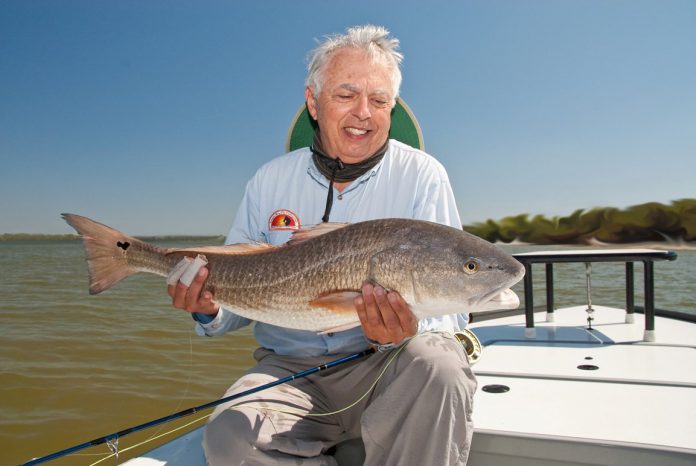The Tampa Bay Times
Besides oppressive heat, floating weeds and grass are things we must contend with when fishing with a fly rod. If we don’t make a fly look natural, fish will refuse it. Having some green stuff on the fly hook will always get a refusal. Flies that represent baitfish must be moved through the water to look exactly as they should. Select fly patterns that have the hook pointed up with relatively stiff hair extending past the hook bend thus giving you a weedless option. If weeds are on the surface, use a weighted fly and even a sink tip line that will get your offering deeper, thus avoiding the weeds. Clouser minnows and bend backs are good examples. Floating flies can also have the hook point upward or be completely protected. Examples are mouse patterns tied with deer hair. If you tie your own flies or have a fly tyer who keeps you supplied, use a strand of 20 or 30-pound hard monofilament tied in at the head to protect the hook point. Single strand wire is also an effective alternative, especially for darker flies. Flies that encourage strikes with little movement are also a great choice; crab, shrimp and sand flea imitations fill the bill here. Time your cast to wait until there is an opening in the grass before casting the fly. Paying attention to wind and tide is a necessity. Accuracy really is important here. You want your fly to hit an open spot that is weed-free. Practice casting to targets in your backyard to improve your ability to hit a small spot. When fishing canals or channels, the windward side will frequently have all the debris leaving the other side open. Catch and release beach fishing is another great option targeting fish in the wash close to the sand, usually a weed-free zone.
Fly fisherman Pat Damico charters Fly Guy in lower Tampa Bay and can be reached at captpatdamico.com and 727-504-8649.
- Capiains Corner. Damico - December 26, 2023
- Pat Damico - December 21, 2023
- CaptainsCorner: Pat Damico - November 27, 2023











